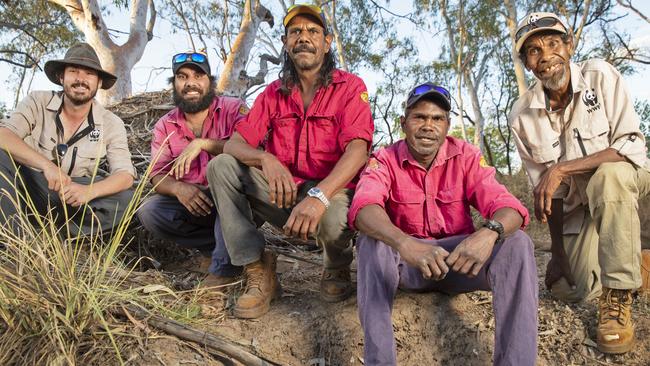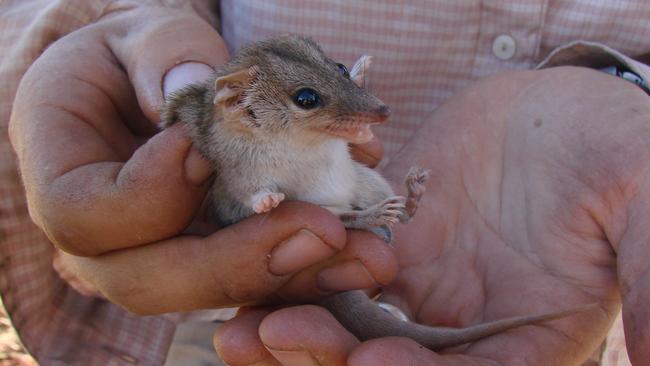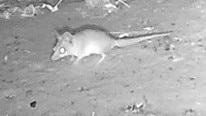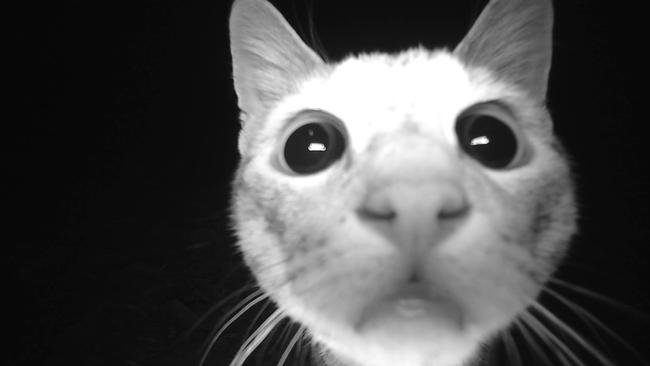Mysterious ningbing surprises with appearance in remote region dominated by feral cats
The mysterious ningbing, a sharp-nosed marsupial that weighs no more than 15 grams, has stunned rangers by turning up in a pocket of the far north Kimberley dominated by feral cats.

The mysterious ningbing, a sharp-nosed marsupial that weighs no more than 15 grams, has stunned rangers by turning up in a pocket of the far north Kimberley dominated by feral cats.
The native ningbing appears to have evaded cats in rocky gorges where an abundance of crevices offer rare protection.
Nyaliga rangers used motion sensor cameras for the first time in a comprehensive survey of animal life on two former cattle stations. It is well known that cane toads have crossed the Northern Territory border into the far northeast corner of Western Australia but the rangers found cane toads were even more prevalent than thought at the former Durack River and Karunjie cattle stations covering almost 640,000ha.
Cane toads were detected more than 250 times in 2020, 2021 and 2022.
Cameras were left out for two months at a time and were deployed in 141 locations between August 2020 and October 2022.

The World Wide Fund for Nature-Australia supported the Nyaliga ranger team’s work.
They did this in part because mammals are declining in the Kimberley and the rangers wanted records of which species are on their traditional lands and where.
“It’s valuable to know what species are out there. As an Aboriginal person, our wildlife is very important to us and has been for thousands of years,” said Nyaliga ranger Clayton Victor.
“We sing about them, do dances about them, they’re in our rock art paintings.

“They’re part of our culture and our way of living as Aboriginal people.”
Mr Victor said he and the other rangers were excited to see the ningbing on the cameras.
Many assumed it was locally extinct but the rangers knew it by its pointed snout and fat tail.
“It’s a very cool little carnivorous marsupial, about 15 grams in weight. They are a secretive and elusive species never before recorded in Nyaliga Country,” WWF-Australia conservation field officer Nick Weigner said.
“We found the ningbing in a remote gorge area in the north. It’s very rocky terrain, which might have helped it persist despite the presence of feral species.”
Other native species detected by the cameras included northern nail-tail wallabies, short-eared rock-wallabies, dunnarts, echidnas and various reptile and bird species.

However, pest species dominated the survey, with the cameras detecting cane toads 256 times across 20 sites, cats 52 times across 34 sites, and cattle 145 times across 15 sites.
The western chestnut mouse was the only native animal more abundant than toads, cats and wild cattle.
Wilinggin and Nyaliga Aboriginal corporations are supporting the Nyaliga rangers’ work to manage pest species, destock cattle, and carry out cool burns, also known as cultural fire management.
Only two goannas were detected. “When the cane toads came through, the goanna population declined heaps,” said Nyaliga ranger Silas Purcell.
“I think they will come back in time, once they learn they can’t eat toads.
“I’m starting to see lots of little goannas.”




To join the conversation, please log in. Don't have an account? Register
Join the conversation, you are commenting as Logout